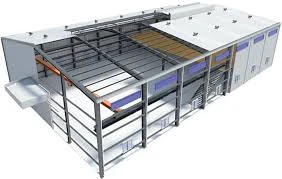- Afrikaans
- Albanian
- Amharic
- Arabic
- Armenian
- Azerbaijani
- Basque
- Belarusian
- Bengali
- Bosnian
- Bulgarian
- Catalan
- Cebuano
- Corsican
- Croatian
- Czech
- Danish
- Dutch
- English
- Esperanto
- Estonian
- Finnish
- French
- Frisian
- Galician
- Georgian
- German
- Greek
- Gujarati
- Haitian Creole
- hausa
- hawaiian
- Hebrew
- Hindi
- Miao
- Hungarian
- Icelandic
- igbo
- Indonesian
- irish
- Italian
- Japanese
- Javanese
- Kannada
- kazakh
- Khmer
- Rwandese
- Korean
- Kurdish
- Kyrgyz
- Lao
- Latin
- Latvian
- Lithuanian
- Luxembourgish
- Macedonian
- Malgashi
- Malay
- Malayalam
- Maltese
- Maori
- Marathi
- Mongolian
- Myanmar
- Nepali
- Norwegian
- Norwegian
- Occitan
- Pashto
- Persian
- Polish
- Portuguese
- Punjabi
- Romanian
- Russian
- Samoan
- Scottish Gaelic
- Serbian
- Sesotho
- Shona
- Sindhi
- Sinhala
- Slovak
- Slovenian
- Somali
- Spanish
- Sundanese
- Swahili
- Swedish
- Tagalog
- Tajik
- Tamil
- Tatar
- Telugu
- Thai
- Turkish
- Turkmen
- Ukrainian
- Urdu
- Uighur
- Uzbek
- Vietnamese
- Welsh
- Bantu
- Yiddish
- Yoruba
- Zulu
снеж . 17, 2024 08:14 Back to list
Portal Frame Foundation Design An Overview
The construction industry continuously seeks efficient and economical methods to build structures, and one of the most effective techniques utilized is the portal frame system. This method, characterized by the use of rigid frames to support loads, is ubiquitous in industrial and commercial buildings. However, the strength and longevity of portal frames significantly depend on the design of their foundations. Consequently, effective portal frame foundation design is critical for ensuring stability, durability, and overall structural performance.
Understanding Portal Frames
Portal frames are structural systems that consist of vertical columns and horizontal beams, forming a rigid framework. They are particularly advantageous because of their ability to span large distances without the need for internal supporting walls or columns. This feature makes them especially useful in warehouses, factories, and agricultural buildings where open spaces are essential for operations. Moreover, portal frames offer flexible design options, which cater to a wide range of architectural needs.
Foundation Requirements
The foundation of a portal frame is crucial as it transfers the loads from the frame to the ground
. There are several factors to consider when designing a foundation for a portal frame structure1. Load Analysis Understanding the loads acting on the structure is the first step. This includes dead loads (the weight of the structure itself), live loads (the weight of occupants and movable furnishings), and environmental loads (such as wind and snow). The interplay of these factors determines the design specifications for the foundation.
2. Soil Investigation A thorough geotechnical investigation is essential to ascertain the soil type, its bearing capacity, and any potential issues such as settlement or shrink/swell characteristics. Different soil types require different foundation strategies; for example, cohesive soils can behave differently compared to granular soils under load.
portal frame foundation design

3. Foundation Type Selection Depending on the load characteristics and soil conditions, different types of foundations can be designed. Common options include spread footings, pad foundations, strip foundations, and, in some cases, pile foundations. Each type has its own benefits and is selected based on both structural and economic considerations.
4. Reinforcement Considerations The use of reinforced concrete in foundation design is also paramount. Proper detailing of reinforcement helps ensure that the foundation can withstand bending and shear forces resulting from lateral loads, such as those from wind or seismic activity.
Design Specifications
When designing a foundation for a portal frame, several design codes and standards must be adhered to. These codes provide guidelines on load factors, safety margins, and material specifications to ensure that the foundation will perform reliably throughout its intended lifespan. Designers must also account for potential future changes in load patterns, such as additional machinery in an industrial setting or increased occupancy in a commercial space.
Construction Practices
Proper construction practices are integral to the successful execution of a portal frame foundation. The quality of materials, adherence to design specifications, and thorough inspections during the pouring and curing of concrete are critical. Construction teams should be adequately trained in foundation work, as mistakes during this phase can lead to significant issues later, including structural failure and costly repairs.
Conclusion
In summary, portal frame foundation design is a complex but essential component of modern construction. A well-designed foundation not only supports the structural integrity of the portal frame but also enhances the building's overall performance and safety. With proper analysis, adherence to standards, and careful attention throughout the construction process, engineers and architects can ensure that portal frame buildings meet their intended purpose while standing the test of time. As the construction industry evolves, advancements in both materials and technologies continue to improve the efficiency and effectiveness of portal frame foundation design, paving the way for more resilient and sustainable structures.
-
Cold Formed Steel Residential Framing
NewsMay.21,2025
-
Innovative Steel Structure Building Solutions
NewsMay.19,2025
-
Innovative Prefab Metal Shed Solutions
NewsMay.19,2025
-
Durable Steel Horse Shelter Solutions
NewsMay.19,2025
-
Durable Metal Shed Solutions
NewsMay.19,2025
-
Durable Big Metal Shed Solutions
NewsMay.19,2025
Products categories
Our Latest News
We have a professional design team and an excellent production and construction team.












